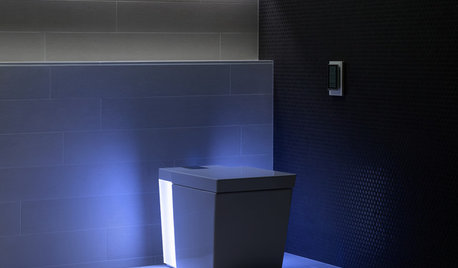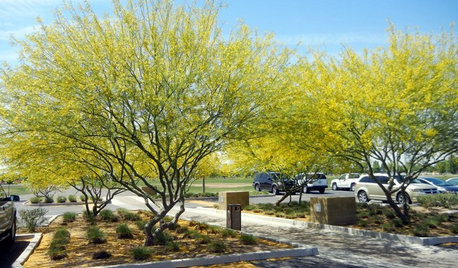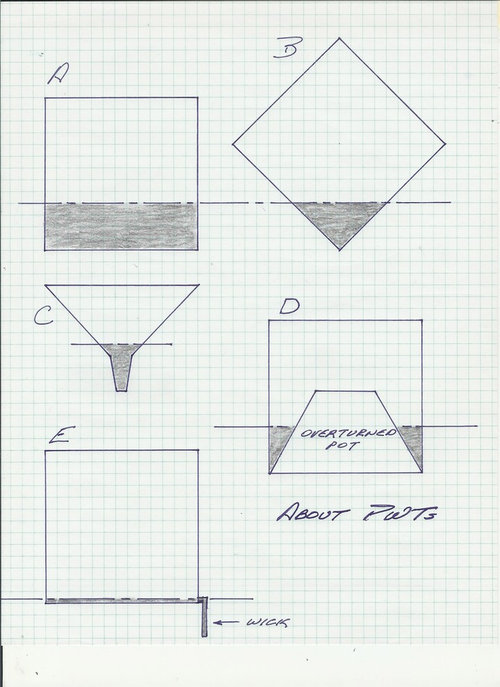DON'T FORGET to FLUSH
tapla (mid-Michigan, USDA z5b-6a)
6 years ago
last modified: 6 years ago
Featured Answer
Sort by:Oldest
Comments (11)
tapla (mid-Michigan, USDA z5b-6a)
6 years agoRelated Discussions
Don't forget your nitrogen!
Comments (31)Hi Sherry, Have you ever tried adding native nitrogen-fixing plants to your rosebeds? I don't know much (like zip!) about Florida natives that fix nitrogen, but I found a few pretty quickly on a Google search--the small partridge pea (annual) and Elliott's milk pea (perennial). Both of these were on the website of the Florida Native Plant Society (link is below). Maybe this wouldn't do a lot, but it might give just a little boost to the soil so your roses could possibly benefit from mini snacks throughout the year. I use a variety of nitrogen-fixers in my garden. Many are California natives, with some non-natives that like the climate here. I have palo verdes (love this tree so I have 3 Parkinsonia 'Desert Museum'), Lotus scoparius (deerweed), Lotus crassifolius otayensis (Otay lotus), pink fairy duster (Calliandra eriophylla), Santa Catalina Island Mountain Mahogany (Cercocarpis traskiae), lots of California lilac (Ceanothus cyaneus, spinosus, tomentosus, 'Snow Flurry', 'Zanzibar', 'Lemon Ice', 'Diamond Heights', 'All Gold'), as well as non natives like white Bauhinia, various clovers, Austrian winter peas, birdsfoot trefoil, etc. Guess I'm just a lazy gardener who would rather not have to add stuff to the garden if the plants can do my work for me.;) My plants are lucky to get a little fish emulsion--although a small number get a mild powdered organic fertilizer occasionally. Many plants I feed nothing. Don't know how successful this would be in a much different climate/soil. Here I have mostly sandy loam, with some strips of the garden being clay or sand. Both the soil and water are alkaline and rainfall is low. The only problem being that the city water is high in boron with varying effects on plants. Melissa Here is a link that might be useful: Florida Native Plant Society...See MoreDon't buy Anderson, Stay away from Pella, forget Marvin!
Comments (16)I am a commercial contractor in Florida. My last home had Pella Architect series throughout. 10 years and 8 months in the home, and we discovered the bottom rails in approximately 75% of the windows had rotted. Our house had casement and French doors throughout. We had two French Doors that the bottom of each had rotted. The only way we found out that our windows and doors had failed was the magnets for our alarm system fell out. The alarm monitor said “zone faulted” When I called the Pella representative in Orlando, I was told that had we called a year earlier, they would have warranted the windows. The frustrating thing was since we live in Florida, it's typically to hot to open the windows so we would never have known if not for our security system. After some investigation into the windows, it became known that Pella knew this issue was a problem for quite a few years. According to one of their installers, they had been testing windows for 6-8 years in south Florida because of the numerous failures. Soon I will be purchasing approximately $150,000.00 worth of windows. I am leaning toward PGT casement windows. I think vinyl and aluminum both have their advantages....See MoreDon't forget to rabbit rabbit!
Comments (5)Not only does it bring good luck, it reminds me to do chores that I try to do on the first of each month. ( coffeemaker carbon filter, I am looking at you )...See MoreDon't forget the rabbits!
Comments (12)Did I tell y'all what my brother did? He brought over the fine jewelry that he'd kept in the safe until mom passed away. We were sitting at the dining room table and things were spread out. The only thing my brother opted to keep in this "lot" were my salt and pepper shakers. He probably thought they were mom's. It was so cute that he seemed to really like them, I wasn't about to say they weren't hers or stop him from taking them. So here are my new S&P shakers (I have a things for bunnies. The others were bunnies too), and my August rabbit rabbit... I can't tell you how much they make me smile. So glad he could keep something from the session....See Moretapla (mid-Michigan, USDA z5b-6a)
6 years agosocks
6 years agotapla (mid-Michigan, USDA z5b-6a)
6 years agolast modified: 6 years agoCheryl
6 years agotapla (mid-Michigan, USDA z5b-6a)
6 years agotapla (mid-Michigan, USDA z5b-6a)
6 years agoCheryl
6 years agoLynn T (6B Boston area)
6 years ago
Related Stories

BATHROOM DESIGNStraight Flush: The Future of Toilets in the Home
Night lights, seat warmers and temperature-controlled bidets are here — and that’s just the beginning
Full Story
ACCESSORIESWhy You Should Forget About the Usual Coffee Table
Think in smaller multiples for a stylish and functional alternative to that monster table in the middle of the room
Full Story
GARDENING GUIDESPlant, Then Forget, These Attractive and Beneficial Natives
Sometimes lazy gardening provides a plethora of flowers
Full Story
HOUSEKEEPING20 Things You Might Be Forgetting to Spring-Clean
Clean these often-neglected areas and your house will look and feel better
Full Story
REMODELING GUIDESGet the Look of a Built-in Fridge for Less
So you want a flush refrigerator but aren’t flush with funds. We’ve got just the workaround for you
Full Story
BATHROOM DESIGNHow to Choose the Right Toilet
Style, seat height, flushing options, color choice and more will help you shop for the right toilet for you
Full Story
SOUTHWEST GARDENINGSouthwest Gardener's May Checklist
Let May's warm temperatures guide your edible and flowering garden plantings, and don't forget to protect and prune your picks
Full Story
REMODELING GUIDESThe 4 Stages of a Remodel: Happily Ever After
At last your project is coming to a close. Well, almost. Don’t forget these final steps before you settle in
Full Story
FUN HOUZZ14 Things You Need to Start Doing Now for Your Spouse’s Sake
You have no idea how annoying your habits at home can be. We’re here to tell you
Full Story
GREEN BUILDINGWater Sense for Big Savings
Keep dollars in your pocket and preserve a precious resource with these easy DIY strategies
Full Story








tropicofcancer (6b SW-PA)